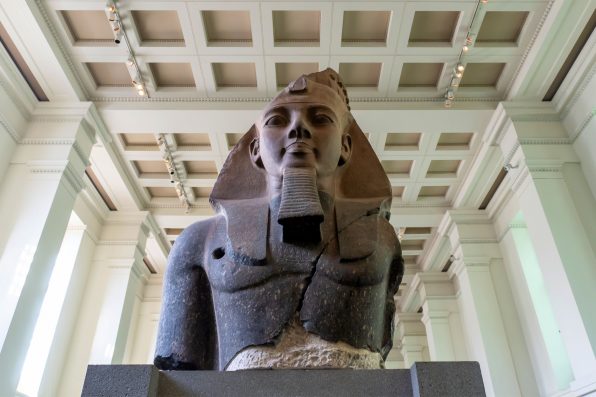About 3,300 years ago, in the early 13th century B.C., an Egyptian statue was made. It was carved from granite and contained traces of red. It was from ancient Thebes in Egypt.
The statue is called the “Younger Memnon” and depicts the pharaoh Ramesses II. He ruled from 1279 to 1213 B.C. It is an 8.8-foot-tall broken head and torso of a statue that is now housed in the British Museum in London.
Ramesses II, also known as Ramesses the Great, was one of the most powerful pharaohs of Egypt’s New Kingdom, which lasted from 1550 to 1070 B.C. The New Kingdom experienced a resurgence of Egyptian traditions following a period of foreign influence.
Ramesses II also may have been the model for the unidentified pharaoh in the Bible’s Book of Exodus. In the book, the pharaoh was said to have enslaved and pursued the Israelites across the Red Sea.
Part of Ramesses II’s plan was to order the construction of temples, monuments, and even cities, along with many large statues of himself. In addition, he led military efforts, including the Battle of Kadesh against the Hittites around 1275.
He became so famous that ancient Egyptians continued to worship him long after his death. At one point, about 1,000 years after his reign, the people left 2,000 rams’ heads at a temple in his honor.
The Younger Memnon was one of two statues that was once situated outside of a huge temple in the ancient necropolis of Thebes, located near modern Luxor. Ramesses II had dedicated that temple to himself.
The name “Memnon” arose in confusion surrounding a series of Greek inscriptions that were carved on a similar statue that caused 19th-century Egyptologists to believe it portrayed a mythical Greek king of that name.
The other statue actually represented the Egyptian pharaoh Amenhotep III. In early Egyptology, all statues of the sort were referred to as “Memnons.” The addition of “younger” was because it was smaller than the others and to differentiate it from the rest.

Sign up for Chip Chick’s newsletter and get stories like this delivered to your inbox.


